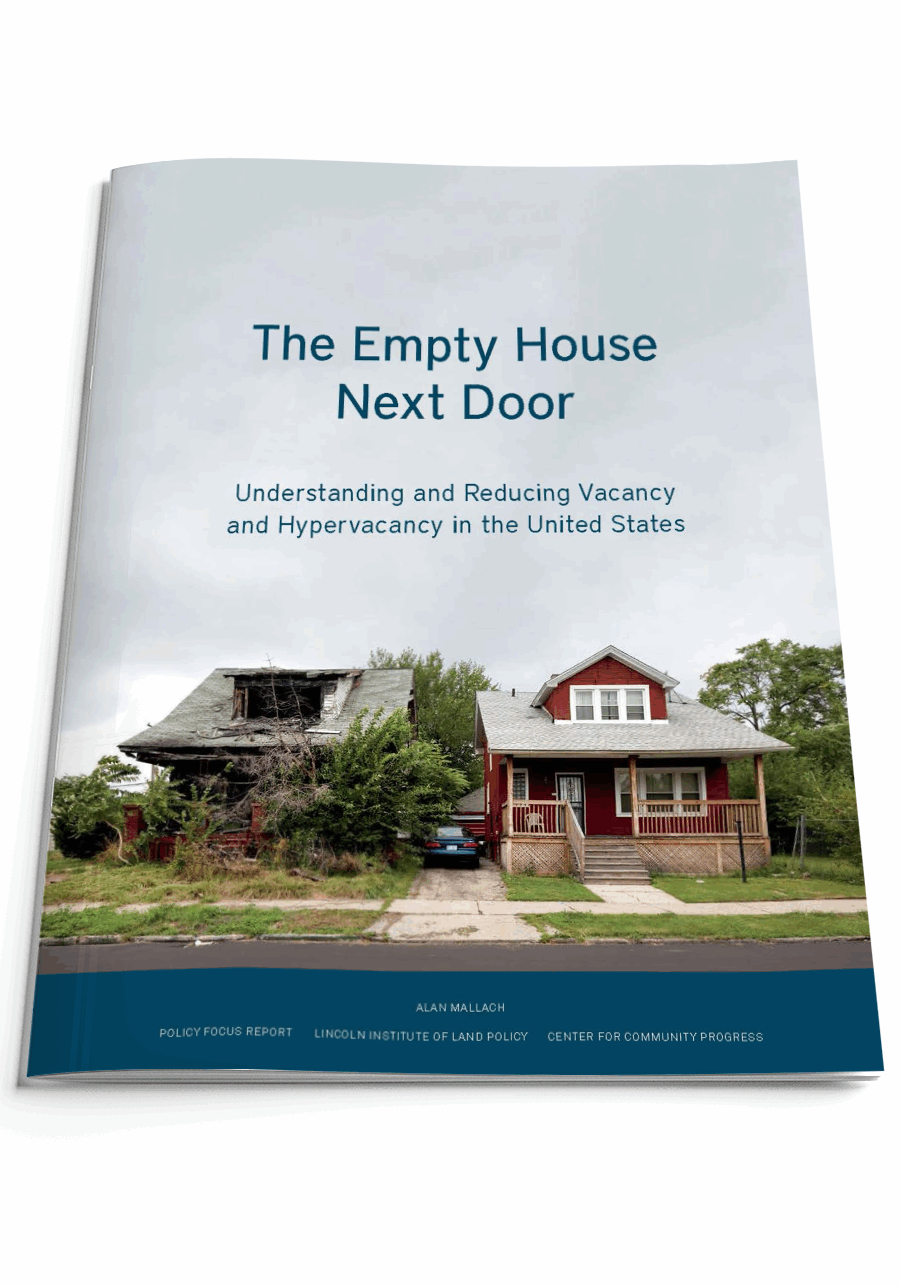The Empty House Next Door
Understanding and Reducing Vacancy and Hypervacancy in the United States
Published: May 2018
Geography: Indiana, Maryland, Michigan, Ohio, Pennsylvania, United States
Author(s): Alan Mallach (Senior Fellow)
Vacant and abandoned properties are a familiar part of the American landscape, from the boarded row house in North Philadelphia to the empty factory in Detroit to the collapsing farmhouse in rural Kansas. These structures can devastate the neighborhood and block, undermine the neighbors’ quality of life, and diminish the value of nearby properties. They also cause severe fiscal damage to local governments, reducing local tax revenues while costing cities millions for policing, cleaning vacant lots, and demolishing derelict buildings.
In this Lincoln Institute of Land Policy publication, renowned city planner, housing advocate, and Community Progress Senior Fellow Alan Mallach presents effective strategies for community leaders, local officials, and nonprofits contending with vacant properties in the United States.
This report lays the groundwork for exploring the issue of vacancy by defining “vacant property,” what constitutes a “healthy” vacancy rate, how vacant properties are measured, why properties become vacant and abandoned, and the impact of vacant properties on the communities in which they are situated.
Examples in this report illustrate creative ways to reduce the harm cause by vacant properties, jump-start housing markets in struggling neighborhoods, create the potential for future revival, and transform vacant properties into community assets.

Published: May 2018
Geography: Indiana, Maryland, Michigan, Ohio, Pennsylvania, United States
Related Publications
Other Related Content
Subscribe to join 14,000 community development leaders getting the latest resources from top experts on vacant property revitalization.
